A Dim Small Target Detection AlgorithmBased on Multi-Features Fusion Algorithm
ZHANG Shuang-lei,CHEN Fan-sheng,WANG Tao
A Dim Small Target Detection AlgorithmBased on Multi-Features Fusion Algorithm
ZHANG Shuang-lei1,2,CHEN Fan-sheng1,WANG Tao1,2
(1. S,,200083,;2.,100049,)
Based on the transcendental information under the specific scene, by analyzing multiple features’ performance on dim small target detection, this paper designs a dim small target detection algorithm, which combines multiple features’ Eigen values by taking advantage of the multiple features. Taking the following three features as examples, the Space Gray Model Matching, the Region Gray Weighed Entropy and the Adaptive Thresholding in Frequency Domain, based on the transcendental detection results of multiple features under the specific scene, we propose two multi-Eigen values fusion method by using probability theory. Experiments show that the two methods can both effectively improve the performance of dim small target detection in a single frame.
target detection,multi-Eigen values fusion,model matching,dim small target
0 Introduction
For the detection of dim small targets, there are mainly two categories: the TBD(tracking before detecting) algorithm and the DBT(detecting before tracking) algorithm[1-8]. Because of the complicated calculations, the research on the TBD algorithm just stayed at theoretical analysis in the past. But in recent years the TBD is becoming more and more popular with the development of computer technology and the new algorithms about it which has been proposed recently, such as the EFK(extended Kalman filter)algorithm and the PF(pipeline filtering) algorithm etc. The TBD have been highly improved in the terms of the detection accuracy, the detection speed and the reliability, but the complicated calculations still limits its further development and appliances. On the other hand, although the research on the DBT started earlier, its reliability and detection accuracy are no better than the former[1,7]. When taking both the appliance and implementation into consideration, we will see advantages of the DBT which don’t need very complicated calculations. So, it has been widely used in real-time monitoring applications. In this paper, we analyze and design three developed detection algori- thms, combined with characters of the imaging system; we construct two three-feature fusion methods finally.
1 The Multi-features Fusion Algorithm
The traditional single-feature target detection has highly developed after years of research, which can realize detection of the small targets from different feature domains. While, its shortages are obvious that it often gains unsatisfactory effect in the area of dim and small target detection. Since the dim and small target imaging process is subject to the energy equivalent and high-energy clutter, the target detection will be affected by the complex background and noise in most single-feature domain, the detection probability also largely limited to imaging conditions, system noise. The primary task to improve the effect of detection algorithm is how to avoid the peak of the interference which called “the blind area” when using single-feature algorithm.
Here, we will introduce a target detection method based on the multi-features fusion algorithm. In this algorithm, we can extract and select mutual independ- ence features according to the environment of the target and imaging system to ensure that the different features can make up for deficiencies in each single- feature algorithm, and finally improve detection pro- bability. In order to illustrate the problem more clearly, multi-features fusion algorithm will be introduced in the following.
Hypothesis, there are three characteristics will be used:(the Region Gray Weighed Entropy algorithm),(the Adaptive Thresholding in Frequency Domain algorithm),(the Space Gray Model Matching algorithm), the Eigen value CDV(Character Digital Value)corresponding to the three features is defined as follows:
CDV1=1() (1)
CDV2=2() (2)
CDV3=3() (3)
The1,2,3is Eigen value calculation functions of the three features; we can calculate target detection probability depending on corresponding feature’s probability distribution by the following formula:
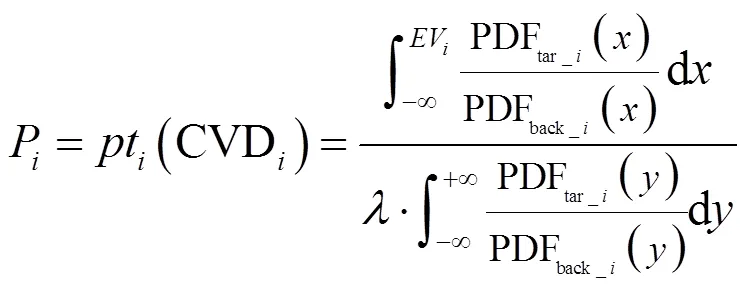
1.1 The Multi-features Fusion Method 1
The essence of multi-feature fusion target detection method is sampling probability density with using different methods. So, we need calculate the probability distribution of each feature, and estimate the probability that the being-detected point is a real one.
Here, we have three features: the RGWE(Region Gray Weighed Entropy), the SGMM(Space Gray Model Matching) and the ATFD(Adaptive Thres- holding in Frequency Domain)as examples to calcu- late their probability distributionsP. Using the above method, we can calculate the probability distributions of three features as follows :
1)The Region Gray Weighed Entropy Algorithm[2]
2)The Space Gray Model Matching Algorithm[3]
3)The Adaptive Thresholding in Frequency Domain Algorithm[4-6]
The probability calculating formula is shown as the following:

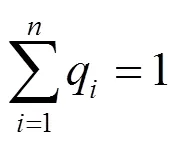
In this article, three weight variables is1=1/3,2=1/3,3=1/3. The normalized probability density distribution of both the target and non-target points of the three algorithms are shown in Fig.1, Fig.3, Fig.5, The normalized probability distribution of the target points of the three algorithms are shown in Fig.2, Fig.4, Fig.6. The features and their joint probability distribution are continuous, complex curve in the above formula, we should interpolate, fitting when detects target, it will increase the complexity of operation. Therefore, to ensure the accurate and reliable of algorithm, we modify three joint probability distributions as follows.
1)To normalize the probability density distribution for each characteristic. Normalize Eigen value CVDof No., the segmentation threshold isT1, T2, …,T(N), it is normalized asinterval, and so on, the number of segmentation threshold we can get is×(-1). Here we assume the=1, 2, 3,=10.
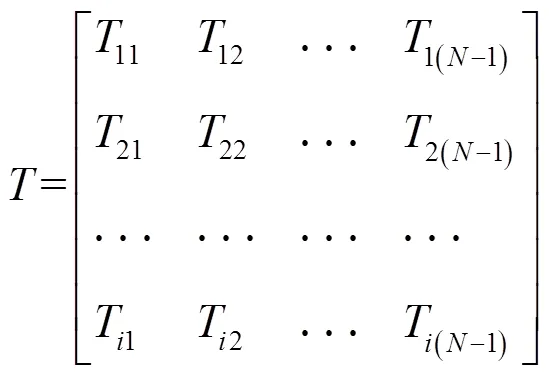

Fig.2 Normalized PD of Target points
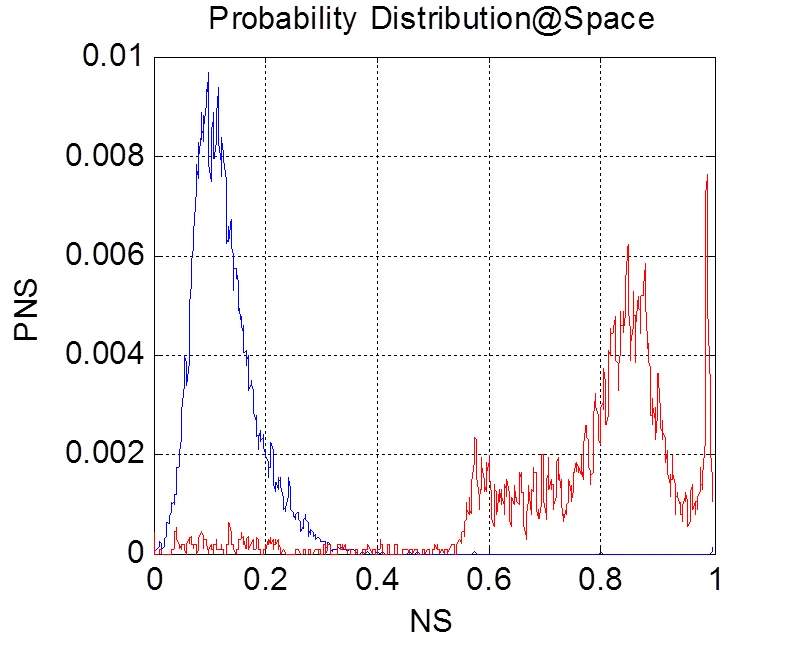
Fig.3 PD of target and non-target points

Fig.4 Normalized PD of target points
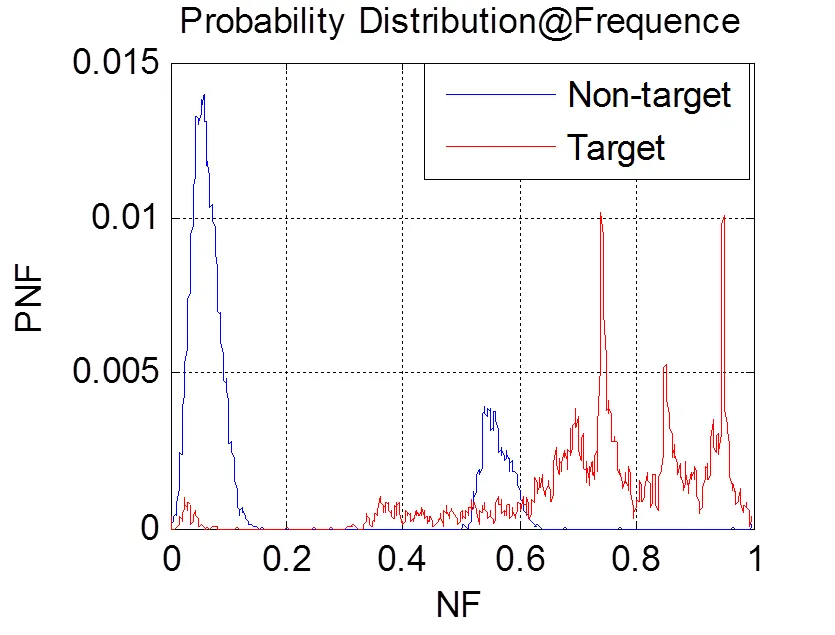
Fig.5 PD of target and non-target points
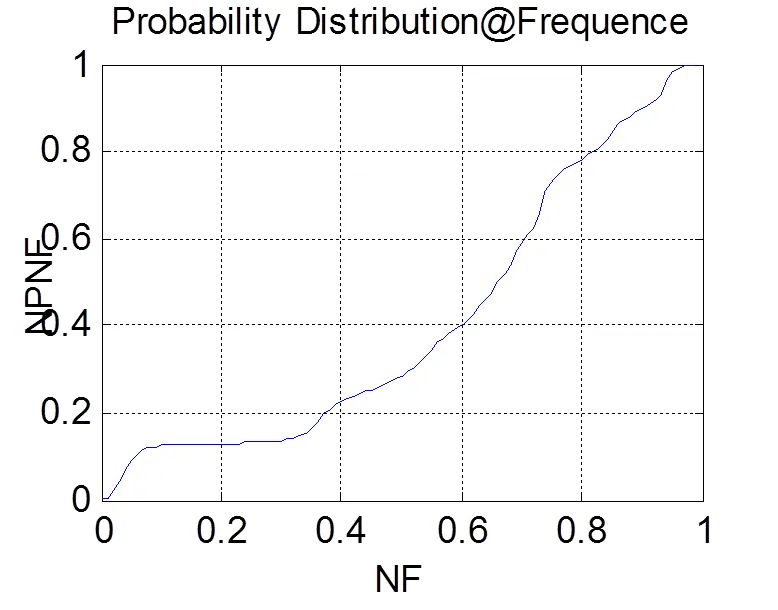
Fig.6 Normalized PD of target points

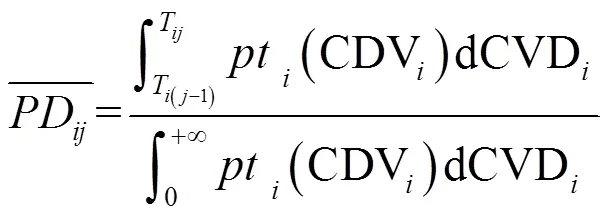
Where:=1, 2, 3,=1, 2, 3,…,,T0equals to -¥, T¥equals to+¥. Three normalized features’ proba- bility in each interval is shown in the Fig.7 to Fig.9.
3)Calculate multi-feature joint probability distri- butionTarget:


1.2 The Multi-features Fusion Method 2
We will construct new characteristic NP(normalized parameter), then analysis both the target point and non-target points’ NP distributions, count the NP’s probability distribution NPD. NP is formed by downward formula:

NCDV(Normalized Character Digital Value) is Normalized Eigen value of feature, it’s calculation formula is shown as the following:

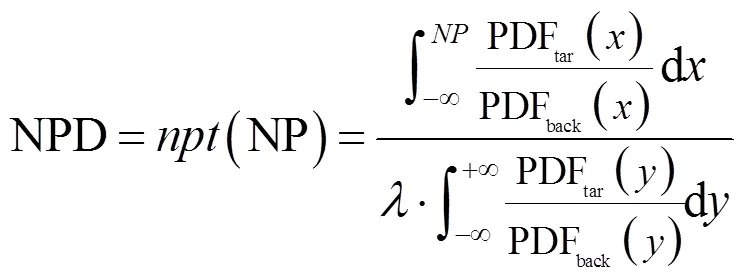
With the same normalizing method as the Multi- Features Fusion Method 1, we can obtain the and the discrete distribution between NP and , which is shown in the Fig.10 and the Fig.11.
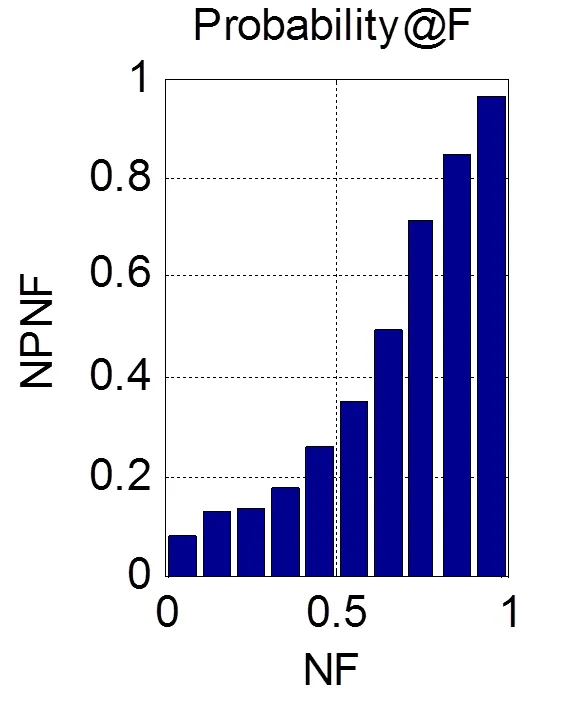
Fig.8 Normalized PD @SGMM

Fig.9 Normalized PD @ATFD
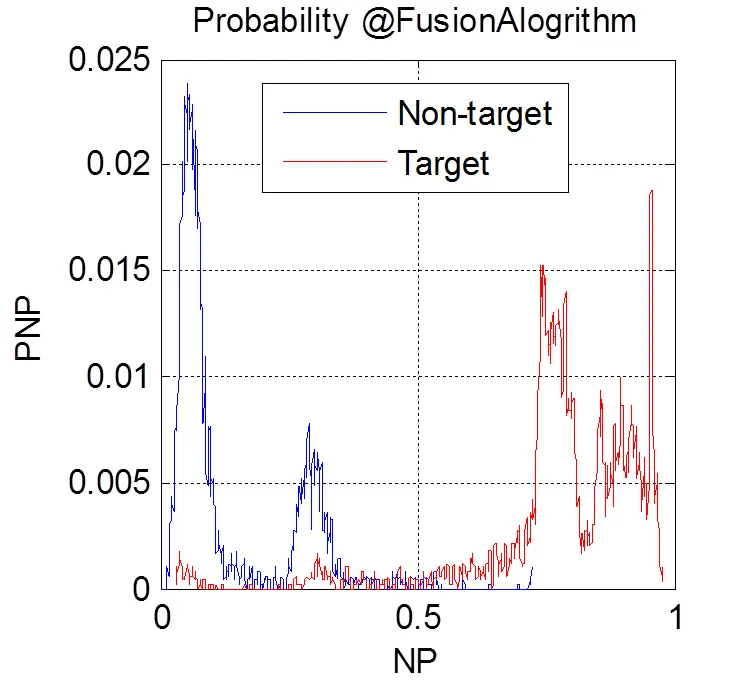
Fig.10 PD of target and non-target points

Fig.11 Normalized PD of target points
In order to achieve the goal of fast target detection in practical application, we need normalize the proba- bility distribution curve; the normalizing method is identical to the first method in feature normalizing. After test, infer and calculate the NP’s probability distribution is shown in the Fig.12.
1.3 The Comparison of Two Methods
The method that dim small target could be detected with joint probability of multi-features has been constructed by method 1. The target detection is based on three relatively independent feature in their feature domain and the method diversities the measurement ways of target detection and improves reliability and detection probability of single-frame target detection effectively, strongly offsetting their own non-sensitive parts of target detection between features through subtly constructing joint mode of multi-features.
Although multi-features fusion algorithm is more reliable than that with any single-feature detection algorithm, large amount of calculation would be needed and the Eigen values of all features need to be calculated respectively. Therefore, the performance of the algorithm depends on the reasonableness of selected features, which contains amount of calcu- lating these Eigen values, the correlation extent of these features, and their individual target detection ability in a specific environment and so on.

What the shortcoming is, that the method need to collect large statistics of samples while carrying on curve fitting of transcendental probability distribution function in the early stage to ensure diversity of samples and reliability of results. The target condition out of samples of early stage will result in lower reliability of processing results.
2 Experiment Result and Analysis
In order to ensure the effectiveness of experiment results, the data is obtained from the same imaging system, and similar target is taken images in the same applied circumstance of data acquisition. These 200 images including target are respectively detected with three single-feature methods and two multi-features methods, the detection result figures are shown below.
From Fig.13 to Fig.17, the detection results of 200 frames including target images by using corres- ponding target detection algorithms are shown in the left. It is concluded that the detection probability fluctuates to some extent when images change with time, which may mainly because the target SNR vary strongly in the successive images with strong back- ground intensity. The right figures collect statistics of 200 frame images’ detection results for all kinds of algorithms and clearly explain the relation of these algorithms’ performance and the SNR of the target.
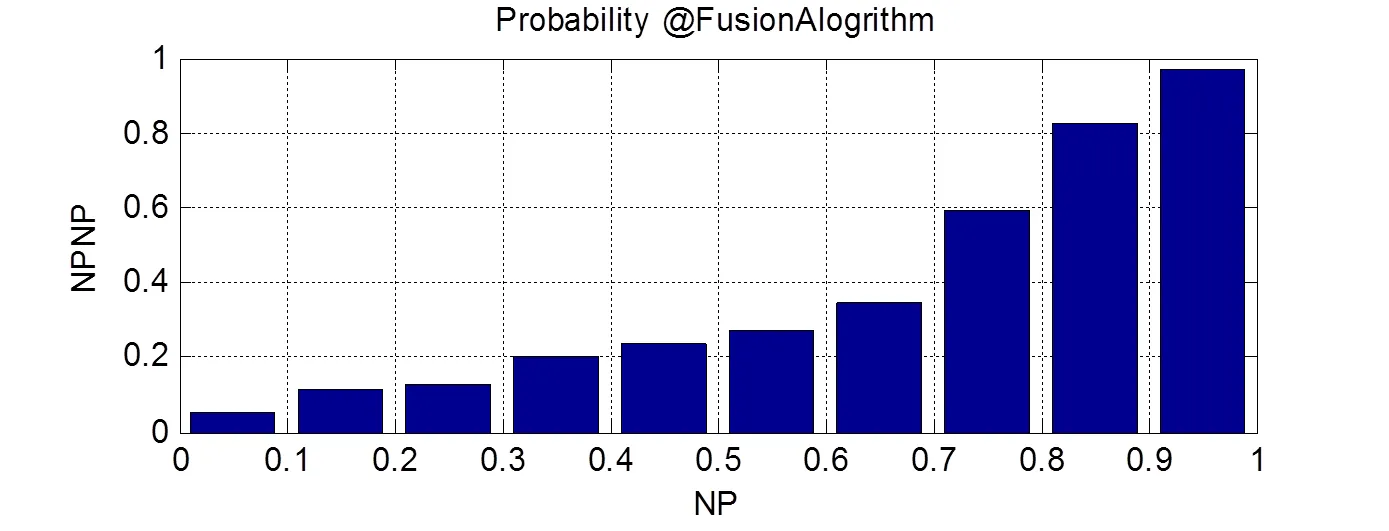
Fig.12 Normalized PD @multi-features fusion algorithm 2
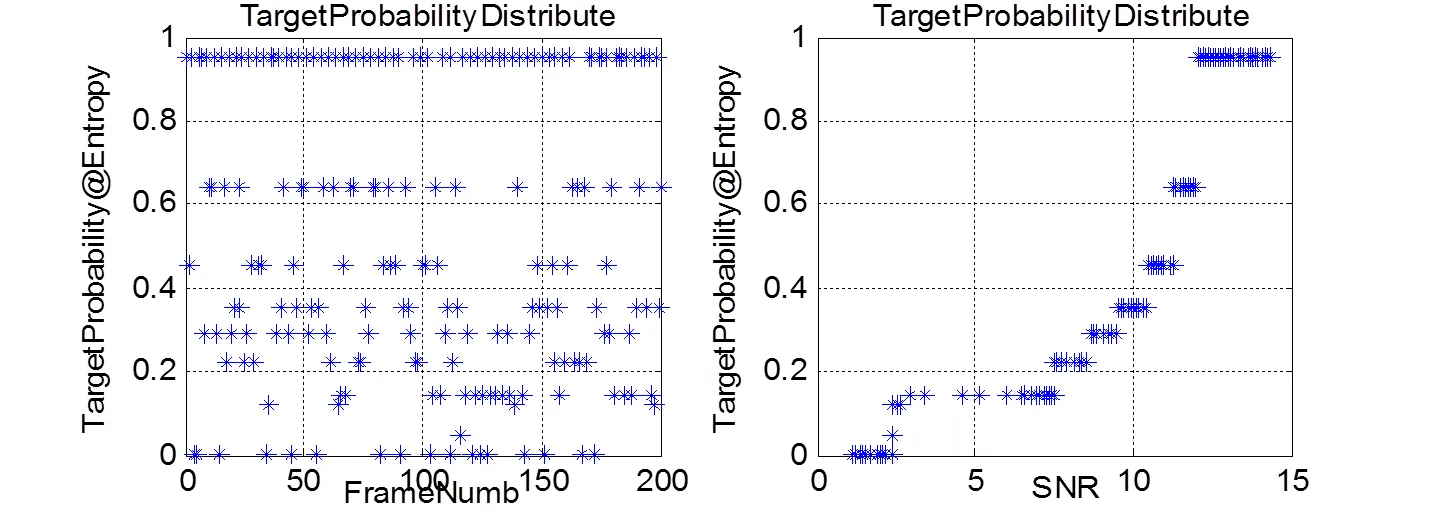
Fig.13 The results by the Region Gray Weighed Entropy method
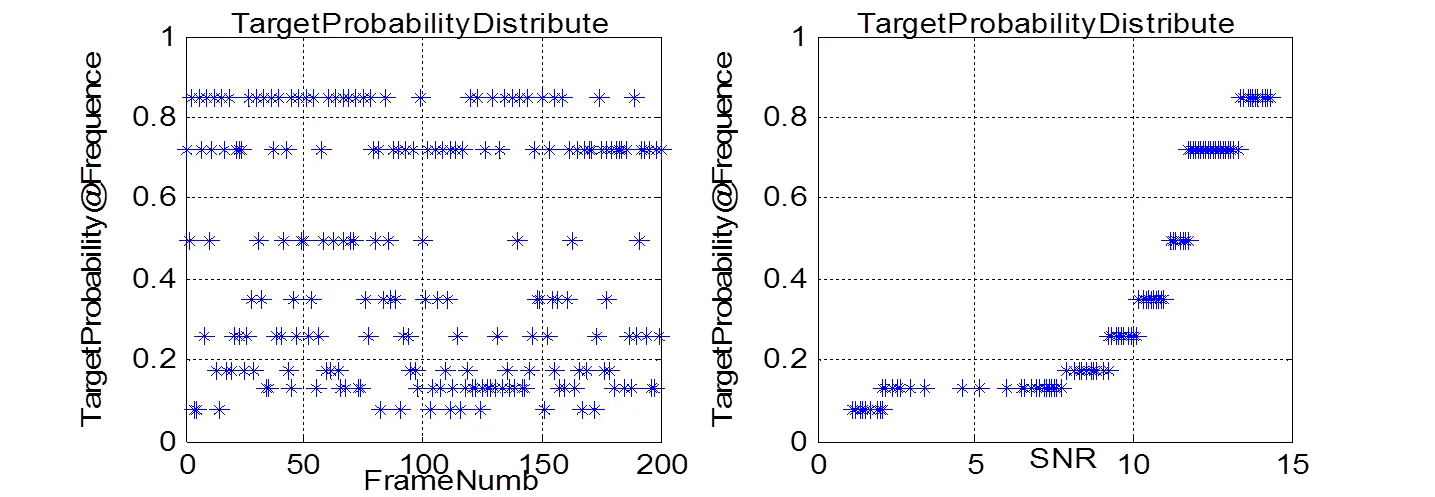
Fig.14 The results by the Adaptive thresholding in frequency domain method
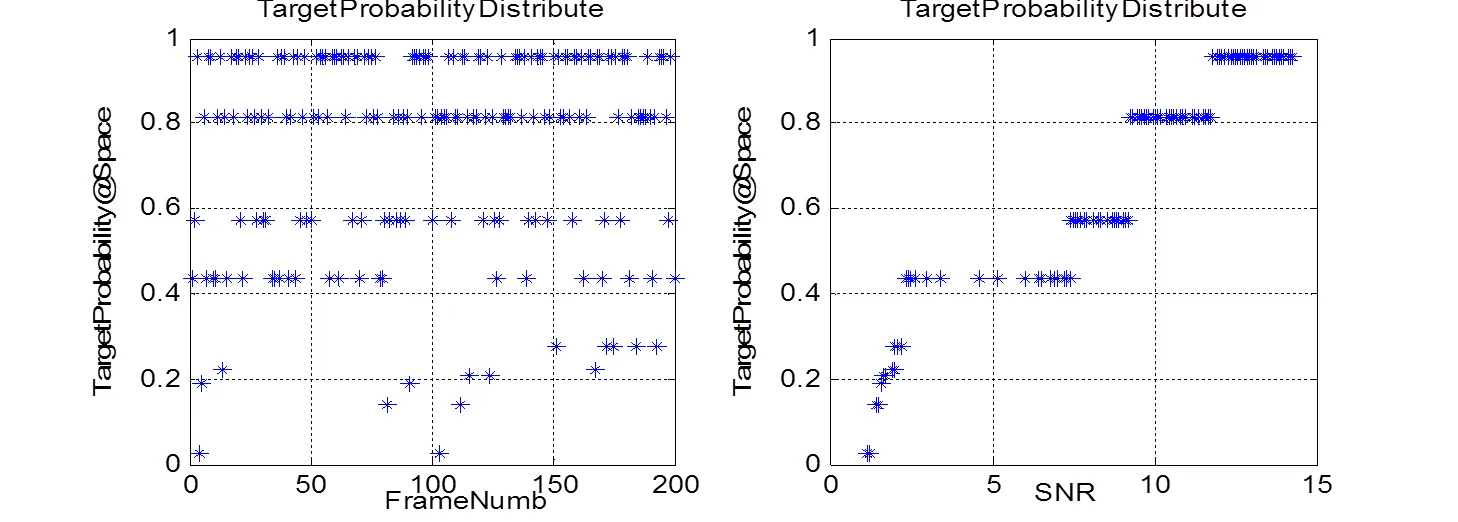
Fig.15 The results by the space gray model matching method

Fig.16 The results by the multi-features fusion method 1
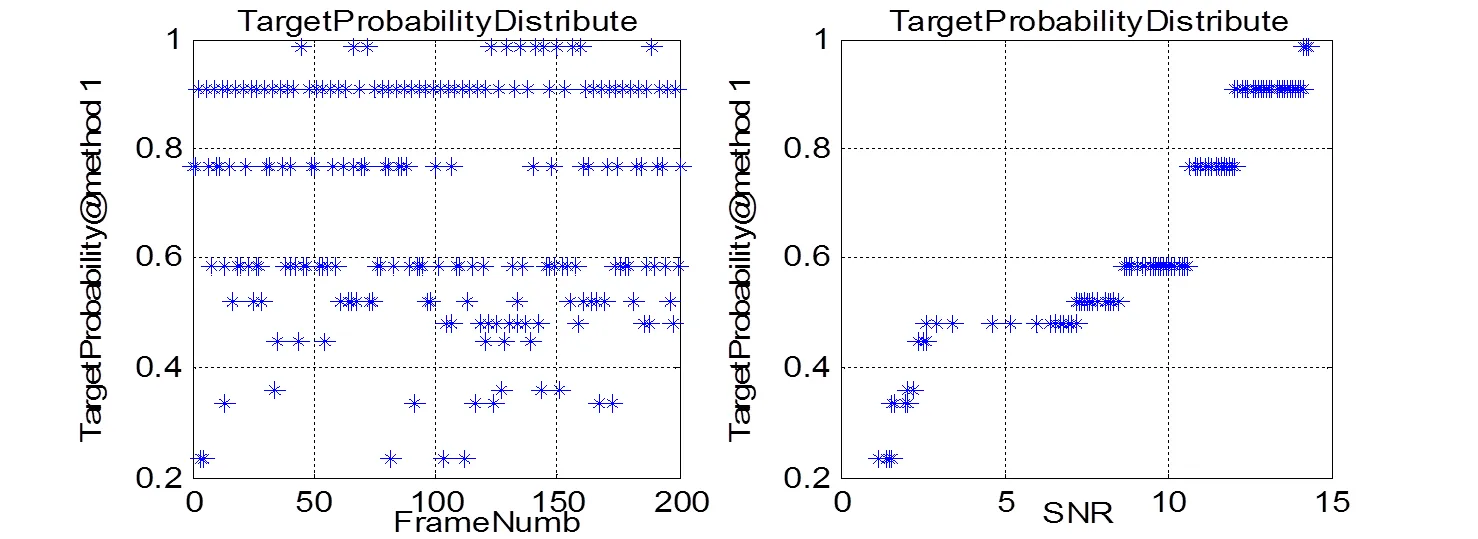
Fig.17 The results by multi-features fusion method 2
As is shown in the left images, target detection probability has been improved in statistics after taking multi-features fusion algorithm and the values of target detection probability could mostly be increased to more than 0.5. As is shown in the right images from the view of the SNR, the detection probability, for the targets with the same SNR, by taking an arbitrary single-feature target detection algorithm is lower than those by taking multi-features fusion algorithms. Especially for low SNR target, fusion algorithms obviously get higher probabilities over most single- feature algorithms by 0.3.
3 Summary
In the theory, after selecting reasonable features, multi-features fusion algorithm can take all the features’ advantages of target detection by analyzing images in several features’ domains to overcome their shortcoming. In this way, the performance of the multi-features fusion target detection algorithm has been highly improved. What’s more, by taking the advantages of the difference sensibilities to target condition between the features, and by accomplishing the detection missions in different stages with different features dynamic, the method could decrease the calculation of multi-features fusion algorithm effect- tively. Especially for the low SNR targets, the effect could be better.
However, there are still some drawbacks for the algorithm. The first problem is the selection of relatively independent features. When taking the design and selection of features into consideration, it’s difficult to guarantee their relatively independent, because they are often relative directly and indirectly, besides, the weight relationship among features will also have an effect on the performance of this algori- thms. So, more research needs to be carried on for this algorithm.
[1] 汪国有, 陈振学, 李乔亮. 复杂背景下红外弱小目标检测的算法研究综述[J]. 红外技术, 2006, 28(5): 287-292.
WANG Gouyou, CHEN Zhenxue, LI Qiaoliang. A review of infrared weak and small targets detection under complicated background[J]., 2006, 28(5): 287-292.
[2] 李欣, 赵亦工, 郭伟. 基于复杂度的自适应门限弱小目标检测[J]. 光子学报, 2009, 38(8): 2144-2149.
LI Xin, ZHAO Yigong, GUO Wei. Adaptive threshold detection method for dim and small target based on image complex degree[J]., 2009, 38(8): 2144-2149.
[3] 王岳环, 陈妍, 程胜莲, 等. 基于模式侧抑制复杂背景下的小目标检测[J].红外激光工程, 2005, 34(6): 703-708.
WANG Yuehuan, CHEN Yan, CHENG Shenglian, et al. Small target detection in clutter based on patternlateral inhibition[J]., 2005, 34(6): 703-708.
[4] 程塨, 郭雷, 韩军伟, 等. 基于形态学带通滤波和尺度空间理论的红外弱小目标检测[J]. 光学学报, 2012, 32(10):1-8.
CHENG Gong, GUO Lei, Han Jun-wei, et al. Infrared dim small target detection based on morphological band-pass filter and scale space theory[J]., 2012, 32(10): 1-8.
[5] 袁慧晶, 王涌天. 一种抗干扰的弱小目标检测方法[J]. 光子学报, 2004, 33(5): 609-612.
YUAN Huijing, WANG Yongtian. A new denoising method for small target detection[J]., 2004, 33(5): 609-612.
[6] 薛峰, 操乐林, 张伟. 点扩散函数对点目标探测性能的影响分析[J]. 红外激光工程, 2007, 36: 178-181.
XUE Feng, CAO Le-lin, ZHANG Wei. Research on effect of PSF on point target detection performance[J]., 2007, 36: 178-181.
[7] 陈钱. 红外图像处理技术现状及发展趋势[J].红外技术, 2013, 35(6): 311-318.
CHEN qian. The status and development trend of infrared image Processing Technology[J]., 2013, 35(6): 311-318.
[8] 王宇庆, 王索建. 红外与可见光融合图像的质量评价[J]. 中国光学, 2014, 7(3): 396-401.
WANG Yu-qing, WANG Suo-jian. Quality assessment method of IR and visible fusion image[J]., 2014, 7(3): 396-401.
一种基于多特征参数融合的弱小目标检测算法
张双垒1,2,陈凡胜1,王 涛1,2
(1. 中国科学院上海技术物理研究所,上海 200083;2. 中国科学院大学,北京 100049)
基于特定场景的先验信息,通过分析多个特征参量对弱小目标检测的性能,利用各参量对弱小目标检测的长处,设计了一种基于多特征融合的目标检测算法。以空域匹配模型、区域加权信息熵和频域滤波自适应阈值分割3种方法为单特征量,基于各个特征量对特定应用场景下的大量目标检测的先验结果,利用概率论的知识,构造了有利于提升计算速度和检测概率的两种多特征融合方法。实验表明,该方法能够有效地提高单帧弱小目标的检测性能。
目标检测;特征融合;模型匹配;弱小目标
TP391
A
1001-8891(2015)08-0635-07
2015-03-11;
2015-07-20.
张双垒(1986-),男,在读博士研究生,主要从事红外成像系统和红外目标探测技术方面的研究。
陈凡胜(1978-),男,博士,研究员,目前担任国家某重大专项卫星载荷项目负责人,中科院某重大创新项目课题负责人。E-mail:paper_purple@126.com。
中科院重大创新项目,编号:G09K1200B00。.

